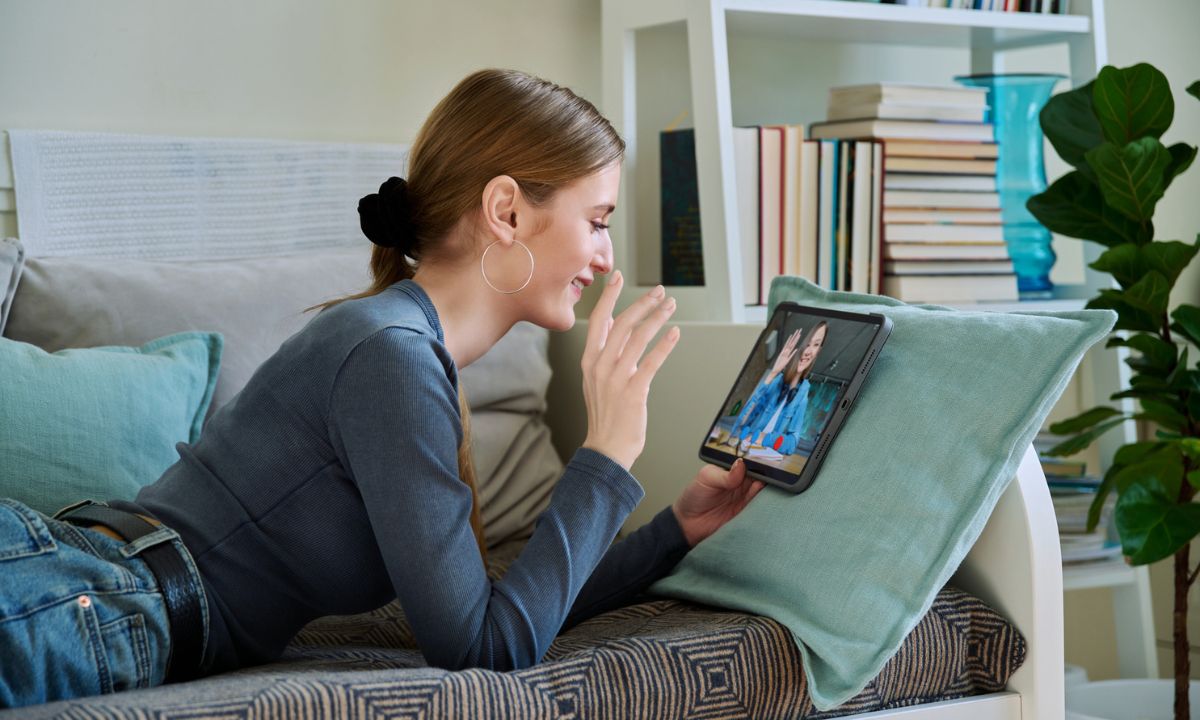Teletherapy Can Be Even Better Than In-Person Counseling for Kids’ Mental Health
Chen: After shifting online during COVID, I was surprised that patients were more engaged and less shy than in person. Those benefits continue today

Get stories like this delivered straight to your inbox. Sign up for The 74 Newsletter
When the pandemic stopped me from seeing patients in person, I expected a professional crisis. How was I going to connect with kids and families across this digital divide? With no choice but to try, I shifted my practice and went fully remote.
The outcomes surprised me. Not only were my patients engaged; kids introduced me to beloved pets and belongings, and children who had been shy in person chatted comfortably from their bedrooms. What I first saw as a barrier became an unexpected window into my patients’ lives. It soon became clear that teletherapy could be a powerful solution to the growing mental health needs of America’s kids.
It’s not just me. Research shows high-quality virtual treatment has made a meaningful difference for countless children and families — for anxiety, stress, depression and PTSD, and across age groups, it bridges critical access gaps and offers benefits that often match and even surpass traditional face-to-face treatment.
Partner schools refer students across grade levels to Cartwheel therapists for a wide range of mental health issues. Feedback shows that equitable access to 1:1 virtual care has improved school attendance, reduced behavioral issues and drastically reduced wait times for support.
Teletherapy also offers unique clinical advantages. For children with anxiety, being at home creates a sense of safety that encourages openness. When overwhelmed, kids can step away or turn off their camera, giving them space to manage their emotions in ways that aren’t always possible in person. Plus, virtual sessions can help families assess and de-escalate situations before they reach crisis levels.
Alongside stigma, access is one of the biggest obstacles to youth mental health care. Families often face barriers like transportation, tight schedules, cost and limited local providers. The need is overwhelming — some 20% of children in the U.S. have a diagnosable mental health condition, yet just 53% received treatment or counseling from a mental health professional. And of those who do, the vast majority drop out before receiving adequate care, particularly those from low-income families.
Teletherapy transforms this landscape. Kids can join from home or a private space at school, and parents can participate without missing hours of work. Schools can help connect families to care, often at low or no cost. Virtual care also opens doors to a broader network of clinicians, including those who speak a family’s language or specialize in specific needs. This flexibility in matching — regardless of geographic constraints — can help families connect with the care they need and supports the building of stronger relationships, leading to better outcomes.
Teletherapy is also a critical lifeline for those working in school districts. Counselors and teachers are often the first to notice when a child is struggling, but they’re stretched impossibly thin. The American School Counselor Association recommends a student-to-counselor ratio of 250:1, yet the national average is 408:1, with some states facing much worse.
Virtual care helps bridge this gap without overburdening school staff. And when schools, providers and families work together, the result is a stronger, more coordinated safety net for students.
For teletherapy to be effective, however, clinicians must possess the skill set to adapt their methods and build rapport in new ways — it’s not simply a matter of moving care from in person to online. Structured virtual activities such as interactive games, role playing or guided drawing exercises, digital communication skills and caregiver involvement are key to maintaining engagement and delivering meaningful care. That’s why it’s essential for families and schools to work with clinicians trained in virtual treatment.
While most adults still opt for in-person health care, today’s kids — raised on FaceTime, Zoom and social media — often feel more comfortable connecting virtually. Many prefer the familiarity of digital platforms, and tools like screen sharing, whiteboards and online games can make therapy more dynamic and engaging. Teletherapy isn’t a replacement for all in-person care, especially for complex cases. But it’s a powerful, proven solution for many. Across the country, schools and families continue to see a rise in youth mental health issues, and virtual care can offer access, flexibility and effectiveness at scale. Looking ahead, there’s no doubt that teletherapy will play an increasingly vital role in shaping the future of student mental health care.
Get stories like these delivered straight to your inbox. Sign up for The 74 Newsletter

;)
